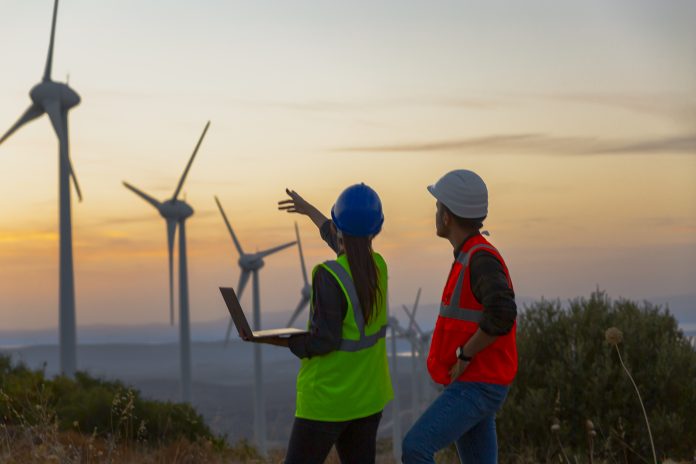Tim Roff, technical lead of new energy infrastructure at United Living, explores how the sector can accelerate the UK’s energy transition using smarter integrated energy infrastructure systems
Changes to how we produce, store, supply and use energy are coming. And not a moment too soon. Since 2019, the UK has been committed to achieving net zero carbon emissions by 2050 and a 68% reduction in carbon emissions (relative to 1990 levels) by 2030.
Everyone has a role to play in accelerating the UK’s energy transition. All sectors of the economy must take responsibility for reducing their own emissions by decarbonising industry or retrofitting homes to improve their thermal efficiency.
At United Living Infrastructure Services (ULIS), we recognise that there is a particularly vital role to be played by the energy sector itself. To achieve the government’s emissions targets, we must transition to a new energy landscape based on a smarter, more sustainable, and more integrated energy infrastructure system.
The UK’s energy transition must bring greater resilience and stability
Recent events have also shown the chaos caused by global shocks leading to price volatility and shortages. The UK’s energy transition must also bring greater resilience, including the capacity to deal with the large spikes of demand we experience daily and across the seasons.
Investment in new energy infrastructure will not only safeguard the environment and increase energy resilience but also bring much-needed economic stimulus, especially in Britain’s former industrial regions. If we get it right, we can also lead the way for other nations, exporting know-how to help them decarbonise and creating rewarding career opportunities at home.
Engineering new sustainable energy systems
In the energy sector, academic partners and other stakeholders are working collaboratively to engineer safer, smarter, more secure and reliable energy infrastructure fit for the future. From established solutions like district heating systems to the emerging technology of the Internet of Things (IoT), sustainability is at the heart of all new infrastructure.
New energy systems will store and transport low-carbon energy and products to consumers and enable carbon emissions to be captured and stored. At the same time, the UK is transitioning to fully sustainable energy sources.
For example, the flagship HyNet project in England’s northwest combines a low-carbon hydrogen gas supply system with a system for harvesting carbon dioxide from industrial waste. HyNet responds continually to fluctuations in energy production and demand as part of an integrated regional energy system. The potential exists to decarbonise this key industrial region from early 2025, showing the way for other regions.
The energy utility sector is also working to establish if hydrogen could be used, either within the existing gas system or on its own, to provide low-carbon alternatives for heat, power and transportation. The first UK pipelines to transport gaseous hydrogen from producers to end users and to capture, transport and store waste carbon dioxide are now being developed.
New H2 and CCUS energy infrastructure certainly have a role to play in meeting the net zero energy needs of the UK industry and in supplying low-carbon energy to businesses and homes in the vicinity. There is also a strong mandate to store, distribute and utilise surplus energy generated in heat and hydrogen networks as part of the energy transition pathway.
Innovation throughout the supply chain
The supply chain is engaged in similar collaborations to create novel module content for engineering degrees, new trailblazing apprenticeship schemes and unique technology.
Examples include digital field-force enabling tools which use the latest vision, communication and neural network AI technology to improve quality control.
Similarly, Digital Twin, a virtual replica of an installation, allows using Augmented Reality before, during and after the build to enhance visualisation, digital rehearsal and scenario modelling and diagnostics.
These technologies complement our modern reimagining of the whole construction ecosystem. The result is that almost no non-hazardous construction waste is going to landfills.
Meanwhile, other low-carbon construction technologies are being developed, including Electric and Hybrid Vehicles, Plant and Machinery. Diesel is being replaced with Hydrogenated Vegetable Oil (HVO) in heavy lifting and excavating machinery, and deploying Solar and Hydrogen Fuel Cells are powering lighting and welfare cabins.
A next-generation workforce
There is a huge growth in demand across multiple utility infrastructure sectors, but there are also severe workforce shortages, certainly regarding people with the relevant industrial skills.
At ULIS, we believe that building, operating and maintaining new energy systems while maintaining existing infrastructure will require sustained investment and collaboration between government and industry. The goal must be to attract and retain a new generation of workers into our industry and explore new approaches to developing their skills and knowledge. One possible trend is the movement of labour from other construction sectors into energy infrastructure.
The industry needs to make a collective effort to develop skills and encourage new entrants
More fundamentally, though, the whole industry must take ownership of skills development, workforce planning and management – for example, by sponsoring degree and apprenticeship-level programmes, as well as providing on-the-job training and development, which has been in decline for decades.
Skills academies, professional engineering institutions and higher education establishments need to work much closer together and use shared funding streams to reduce the gaps that have emerged between the existing workforce and the skills that are needed to build, run and maintain new energy networks.
Of course, the government needs to play its part, not only in terms of regulatory models but also in developing policies designed to stimulate longer-term local and national skills.
The UK’s energy transition is happening, but its success is not inevitable. The energy industry, government and other stakeholders must work together to accelerate this transition by investing in new infrastructure, technologies and a new workforce capable of meeting our ambitious net-zero targets. Only then will we safeguard the future both for this generation and for those to come.
Tim Roff
Technical Lead
New Energy Infrastructure

















